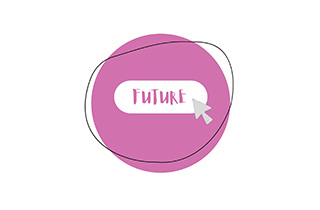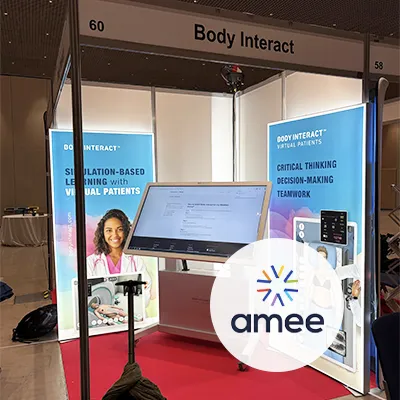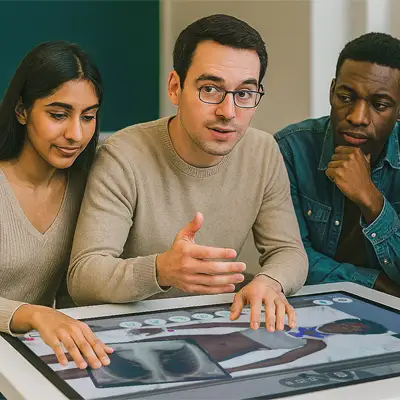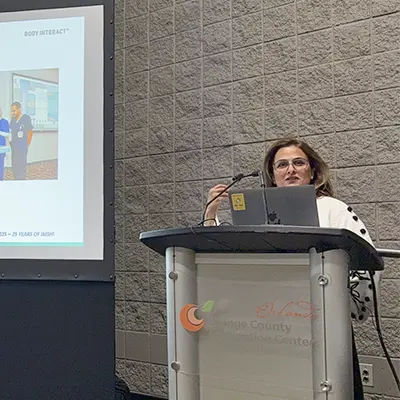Schools of healthcare professions have reinvented their teaching methodologies since the COVID-19 outbreak. Some have been able to fully operate remotely, others have found a balance between in-person class and online learning.
As discussed right in the beginning of this pandemic, it’s important to encourage educators to share their experiences during lockdown. For sure, other teachers would benefit if they understand how other institutions, educators and healthcare professionals have reinvented themselves by adopting these new digital solutions.
More than making sure everyone was able to keep their classes on going, it was essential that schools would find solutions that were able to respond to unpredicted challenges – future pandemics that would request schools to close, clinical practice that could be potentially suspended or simply the need to balance face-to-face and digital learning classes.
In order to share these valid insights, Body interact, in partnership with the Society of Simulation in Healthcare, promoted a webinar under the thematic of Distance Learning Education during and after COVID-19.
Thus, five educators were invited to share their experiences on the importance of using virtual patient simulation during the outbreak. From Georgia to Chile, all speakers brought to the webinar a different perspective, having Body Interact as the digital solution.
Take the chance to read the story of Professor Pier Ingrassia from Università del Piemonte Orienale, Italy; Dr Sherria McDowell from the NERA MedPrep HCOP Academy, USA; and Professor Paata Tsagareishvili from David Tvildiani Medical University, AIETI Medical School, Georgia.

An investment in the finalists
Our third speaker was Professor Pier Ingrassia from Università del Piemonte Orienale in Italy. With the recent creation of their sim center (2014), the university has implemented a specific simulation curriculum, covering the six years of the medical degree with different types of simulators.
According to the learning objectives established, each medical year uses the simulator that helps the most to achieve the academic year goals. Either using tasks trainers, virtual patients, simulator patients, role games (for non-technical skills) and high-fidelity manikins, all exercises end with a debriefing session.
As the university converted all its classes into video lectures, they were unable to deliver the same curriculum in terms of practical sessions to all academic year. Therefore, they decided to focus their investment on the third- and sixth-year medical students. Mainly due to their mandatory practical curriculum, but also for the finalists. Simply because if they did not complete a certain number of hours of practical training, they wouldn’t be able to graduate.
Track your students’ performance
Again, one of the main challenges was to convince the faculty members about how the simulator works and how they could benefit from using it in their trainings. Yet, once they were introduced to Body Interact, they immediately noticed the value and benefit of its Learning Management System – BI Studio.
The BI Studio allows professors to check either group or individual performance metrics. It helps the educator to identify what students’ needs requires improvement and also, how to positively reinforce their correct decisions.
Within this complementary tool, they’re able to get closer to their learners by providing personalized feedback on their performance. At the same time, they could define the learning objectives of the next class.

Body Interact and NERA together to better address the healthcare needs
Northeast Regional Alliance (NERA) MedPrep HCOP Academy is a federal initiate that brings together 3 Medical Schools and 1 community-based organization to conduct a a 3 level cohort-based program to expand health careers preparation for underrepresented, as well as educationally and economically disadvantaged students with the goal of increasing competitiveness for medical school.
Dr Sherria McDowell was our fourth speaker of the day and brought to the table the idea of using Body Interact as an educational tool that contributes to increase the diversity of the physician workforce in order to better address the healthcare needs of the USA nation.
Prepare in advance, discuss it today and review it tomorrow
Two days before each session, students would get access to the clinical scenario and be presented with the learning objectives of the class. With this, they would be able to formulate their questions and explore the diagnostic and treatment strategies in advance, so they would be prepared to discuss the clinical scenario with their colleagues and tutor.
When a student is unable to attend training or wish to review the discussion, they were able to find the recording of the session in the Resources Lab of the academy. A digital place, created by the organization, that gathers all kind of resources that help student to enhance their skills, increase their knowledge and improve their performance.
Be able to train in a safe learning environment
After the pilot experience, students were able to provide their feedback on the simulator. They have provided great feedback on:
- the scenario content,
- the chance of studying anytime & anywhere,
- the performance score, and
- the scenario design and layout.
The chance of practicing with life-like scenarios in a safe learning environment enabled them to develop their clinical reasoning and decision-making skills. Moreover, they were able to increase their knowledge retention and confidence on their performance, identify the gaps that needed to be improved and also learn how to work as a team.

How to support and ensure educational process in this new reality?
Our fifth guest speaker was Professor Paata Tsagareishvili from David Tvildiani Medical University, AIETI Medical School in Georgia.
When faced by this COVID-19 breakout, due to the short time available to adjust to this new way of teaching, his university decided to first take a look at what they already had:
- Experience in implementing a virtual patient simulator;
- Clinical simulation classes with Body Interact;
- Other simulators that could be combined;
- Progress platforms such as the Learning Management System of Body Interact (BI Studio); and
- Internal communication platforms that allowed the educators to communicate with the students, assign them work, share materials and resources.
In 2018, when they did a pilot experience with Body Interact one of the benefits that attract them the most was its contribution to the development of the clinical reasoning and decision-making skills. It’s similarity to real-life pressure, the feedback section in accordance to the well-established guidelines and the timeline report also contributed to the satisfaction of the university and supported their decision to go for a wider implementation of the virtual patient simulator in 2019.
Virtual patients during and after the COVID-19
The journey of cooperation between Body Interact and the David Tvildiani Medical University continued to 2020. Even without knowing what was about to come, Professor Paata mentioned that with this digital solution the university was able to ensure clinical rotations throughout the year.
When changing from face to face to digital learning, the university felt the need of activating the Body Interact Learning Management System – BI Studio. With this tool, educators were able to assign scenarios to its 733 students (2nd to 5th year of medical students) and track their individual and group performance.
Also, as a digital tool, it allowed the students, who were lock down in countries such as India and Nigeria, to have access to all the content the educators were providing. Even in places with different connectivity and time zones, they were able to extend the schedule of the session to make sure all students could practice in the comfort of their homes.
Thus, Professor Paata Tsagareishvili concluded that Body Interact can be implemented successfully in different modalities: face to face, distance learning and a blended methodology). It improves students’ readiness and confidence for clinical rotations.
Body Interact – SSH – Part 2
Take the change to read
Body Interact – SSH Learning Lab – Part 1 with Professor Roberto De Ponti from the University of Insubria (Italy) and Professor Eliana Escudero (Chile).
Did you enjoy this article? Take the chance to share it…








